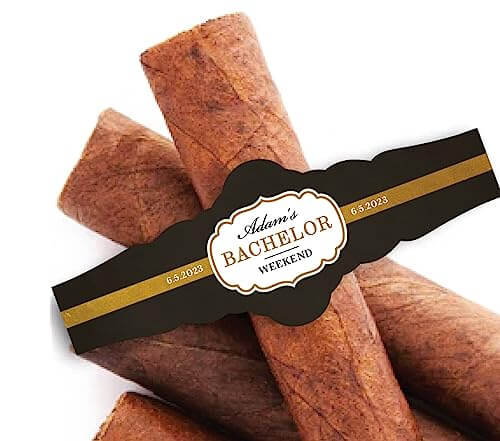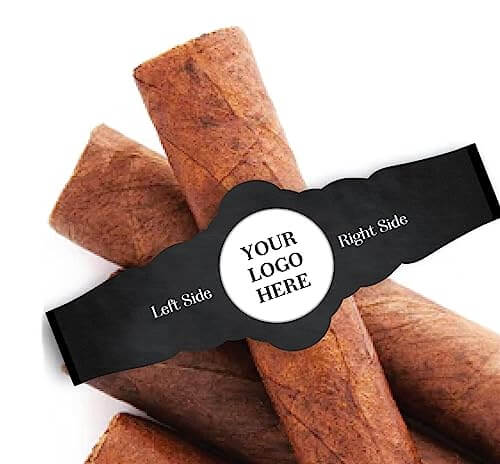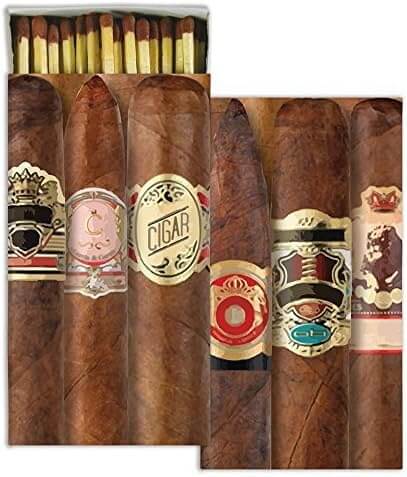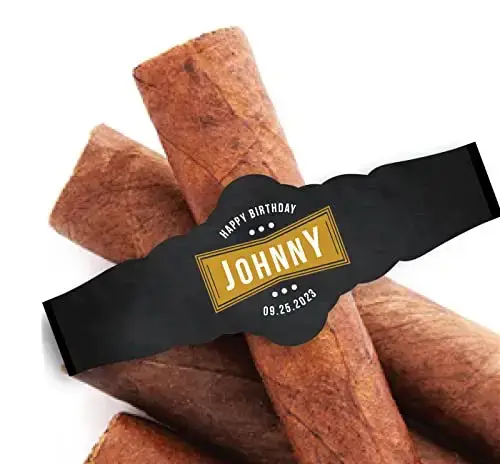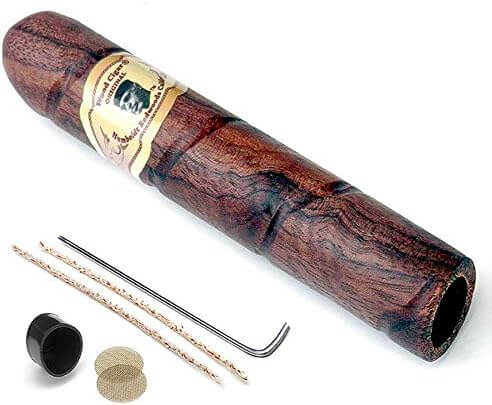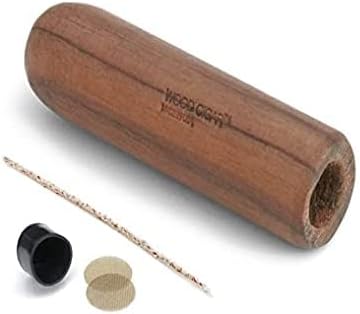The Cigar’s Background: A Tale of Timeless Tradition
The world of cigars is truly remarkable, filled with rich history, robust flavors, and a culture that transcends borders. Today, I want to delve into the nitty-gritty of what truly makes a cigar, a cigar. From the tobacco origins to the intricate production process, let’s explore the fascinating background of cigars together.
Tobacco Origins
It all starts with the tobacco leaf. Tobacco is an annual plant native to the Americas, but its cultivation has spread across the globe, primarily to countries such as Cuba, Dominican Republic, Nicaragua, and Honduras. Each country’s unique climate and soil contribute to distinct flavor profiles in the cigars they produce.
- Cuban tobacco is renowned for its full-bodied flavor and aromatic qualities.
- Dominican cigars are known for their smooth, light, and slightly spicy flavor.
- Nicaraguan tobacco tends to be stronger, with a rich, hearty flavor.
- Honduran cigars often have a medium to full-bodied taste with a sweet hint.
The Intricate Production Process
The production process is where the magic truly happens. It involves growing, harvesting, curing, fermenting, and finally, rolling the cigars.
- Growing: Tobacco seeds are sown in special seedbeds. Once the seedlings are strong enough, they are transplanted to tobacco fields.
- Harvesting: The tobacco leaves are picked by hand. They are usually harvested from bottom to top, as the leaves at different heights mature at different times.
- Curing: After being harvested, the leaves are hung in large, well-ventilated barns to dry. This curing process allows the leaf to develop its characteristic color and flavor.
- Fermenting: Next, the leaves are naturally fermented. Fermentation enhances the flavor and aroma of the tobacco.
- Rolling: Finally, the tobacco leaves are rolled into cigars. This is an art in itself, as the roller must ensure the cigar burns evenly and draws smoothly.
Throughout my cigar smoking journey, I’ve had the pleasure of visiting numerous tobacco plantations. One of my most memorable experiences was at a family-run plantation in Pinar del Rio, Cuba. The sight of endless tobacco fields, the intoxicating aroma of curing barns, and the skilled hands of the “torcedores” (cigar rollers) at work was truly awe-inspiring.
The Variety of Cigar Blends
There’s more to cigars than just the country of origin. The blend, or the mix of different tobacco leaves used in a cigar, plays a massive role in its flavor and strength.
- Wrapper: This is the outermost layer of the cigar. A fine wrapper leaf not only adds to the cigar’s aesthetic appeal but also contributes significantly to its flavor.
- Binder: The binder holds the filler leaves together. It’s generally a stronger and less visually appealing leaf that didn’t make the cut for the wrapper.
- Filler: These are the leaves that make up the bulk of the cigar. They are responsible for most of the cigar’s flavor and strength.
The choice of these leaves and how they are blended together creates an incredible variety of flavor profiles in cigars. Each cigar, whether it’s a Cohiba Behike, a Davidoff Winston Churchill, or a Padrón 1964 Anniversary Series, offers a unique sensory experience.
The background of cigars is a testament to human creativity and craftsmanship. The next time you light up a cigar, take a moment to appreciate the journey each leaf has taken from seed to smoke, and the centuries-old tradition you’re a part of.
Aesthetic Evaluation: An Essential Element in the Cigar Journey
As an ardent cigar enthusiast, the joy I derive from savoring a premium cigar isn’t limited to its smoke alone. The aesthetics of a cigar – its construction, band, wrapper, and pre-light aroma – play a significant role in the overall experience. Join me as we delve into the art of aesthetic evaluation of a cigar.
The Construction
When we talk about the construction of a cigar, we’re referring to how well it’s made.
- Uniformity: A well-made cigar should be uniform in shape and firm to the touch, without any soft or hard spots.
- Wrapper: The wrapper should be smooth and tight around the cigar, without any tears or unraveling edges.
- Cap: A neat cap that’s well-attached to the cigar is an indicator of quality craftsmanship.
On a personal note, I remember holding a My Father Le Bijou 1922 for the first time. Its excellent construction, with a perfectly applied triple cap and seamless wrapper, was nothing short of an artwork.
The Band
The cigar band is the identification card of the cigar. It tells you about the brand and sometimes even the type of cigar you are about to enjoy.
For collectors, it’s a badge of honor, a memento of an unforgettable smoking experience. For example, the intricate gold embossed artwork on the OpusX band or the distinctive lion logo on the La Aurora bands speak volumes about the cigars’ heritage and grandeur.
The Wrapper
The cigar wrapper not only influences the flavor but also contributes significantly to the aesthetic appeal.
- Color: The color ranges from the light ‘Claro’ to the very dark ‘Oscuro.’ Each color is an indication of the tobacco’s age, fermentation process, and flavor intensity.
- Texture: The texture can be smooth and silky, rough and toothy, or somewhere in between.
One of my memorable experiences was with the Padrón 1964 Anniversary Series Maduro. The rich, dark wrapper was a feast for the eyes and promised an intense flavor, which it certainly delivered.
Pre-Light Aroma and Dry Draw
Before lighting up a cigar, take a moment to enjoy its pre-light aroma. Gently smell the foot of the cigar for an initial sensory preview of the flavors that await.
Following this, take a dry draw, which involves puffing on the unlit cigar. This can give you further insights into the potential flavor profile. I vividly recall the pre-light aroma of a Liga Privada No. 9; the smell of earth, cocoa, and a hint of pepper was so inviting that I couldn’t wait to light it up.
Smoking Experience: More Than Just Lighting Up
Let me invite you on a journey, one that doesn’t just involve your sense of taste, but also engages your sight, smell, and touch. Welcome to the universe of cigar smoking. Over the years, I’ve learned that smoking a cigar isn’t a rushed event; it’s an experience meant to be savored. Here’s my guide to understanding the smoking experience.
Lighting Up and Initial Impressions
Lighting a cigar correctly is the first step towards a pleasurable smoking experience. The use of a torch lighter or a wooden match is recommended as it gives you more control and doesn’t infuse any unwanted flavors. The aim is to toast the foot of the cigar evenly for a consistent burn.
Remember my first encounter with the Davidoff Grand Cru No. 2? Its subtle pre-light aroma transformed into a delightful flavor bouquet as I toasted and lit it, making the first few puffs truly memorable.
The Draw, Burn, and Smoke
Once you’ve lit your cigar, it’s time to evaluate the draw, the burn, and the smoke.
- Draw: This is the amount of airflow that comes through the cigar. A good draw allows you to taste the full range of flavors without straining.
- Burn: The burn line should ideally be even all around the cigar. An uneven burn may result in one side burning faster than the other, leading to a less enjoyable smoking experience.
- Smoke: The quality of smoke, including its density and aroma, can greatly enhance the overall experience.
Flavor Profile
The flavor profile of a cigar is the soul of the smoking experience. A cigar is generally divided into three parts – initial third, middle third, and final third – each offering different flavors.
In the Arturo Fuente Hemingway Short Story, I found the initial third presented notes of cedar and spice. As I ventured into the middle third, the spice mellowed, making way for a nutty sweetness. The final third was a harmonious balance of these flavors, ending the experience on a satisfying note.
Ash and Staying Cool
A well-constructed cigar will produce firm ash that remains attached to the cigar. The ash insulates the burn and helps keep the cigar from getting too hot. But remember, it’s best to tap off the ash before it gets longer than an inch.
In one of my cigar adventures, the Ashton VSG impressed me with its long, firm ash and cool smoke, even as I approached the final third of the cigar.
Pairing Suggestions: Enhancing Your Cigar Experience
Just as the right sauce can elevate a dish, the right pairing can amplify your cigar experience. Over the years, my palate has journeyed through the world of cigars and their companions, making each smoke session an exploration of flavors. Let’s dive into the art of pairing cigars with various beverages and foods.
Beverage Pairings
Coffee
I have fond memories of enjoying a Montecristo No. 2 with a strong cup of espresso. The cigar’s creamy, cocoa notes harmonized perfectly with the robust coffee, creating a balanced and satisfying experience.
Spirits
Whisky, particularly single malt Scotch, has always been a classic pairing with cigars. A Partagas Serie D No. 4 coupled with a glass of Lagavulin 16 takes you on a sensory adventure, the spicy, earthy notes of the cigar weaving seamlessly with the whisky’s smoky, peaty nuances.
Craft Beer
A well-selected craft beer can provide a contrasting yet complimentary match. I remember the time I paired an Alec Bradley Prensado with a dark stout. The cigar’s rich, chocolaty tones were wonderfully echoed in the stout’s complex malt character.
Food Pairings
Pairing cigars with food might not be traditional, but it’s certainly worth exploring. Here are a couple of my top picks:
Dark Chocolate
Dark chocolate, with its balance of bitterness and sweetness, can be an excellent companion for a full-bodied cigar. One of my unforgettable matches was a Liga Privada T52 with a square of 70% cacao dark chocolate. The chocolate’s bitterness balanced the T52’s strong, peppery flavors, making each puff a delight.
Nuts
Almonds or cashews can bring out the nutty undertones in many cigars. A Davidoff Signature with a handful of lightly salted almonds was a pairing that highlighted the cigar’s subtle nutty nuances.
Time and Place
Finally, while it’s not a physical pairing, the right time and place can also enhance your cigar experience. Be it a peaceful evening on the patio with a Padron 1926, or a vibrant cigar lounge with a Cohiba Behike – the ambiance plays a significant role in your overall enjoyment.
In the world of cigars, pairing isn’t about strict rules. It’s a personal journey of discovering what combinations delight your palate. So, feel free to experiment and find your unique pairings. Enjoy the adventure!
Comparative Analysis: A Deep Dive Into Cigar Selection
In the enchanting world of cigars, one thing that’s become clear to me over the years is that every cigar offers a unique smoking experience. However, as a cigar enthusiast, I’m often asked to compare and contrast different cigar brands or types. Let’s delve into a comparative analysis of some popular cigars based on my personal experiences.
Cohiba vs. Montecristo
When it comes to classic Cuban cigars, Cohiba and Montecristo often come to mind.
Cohiba
Cohiba, known for its distinct blend of well-aged tobaccos, provides a refined and balanced flavor profile. I remember lighting up a Cohiba Behike BHK 52, expecting an extraordinary experience. It did not disappoint. The smooth, creamy notes of cocoa and coffee with a subtle spice offered an exceptional smoking journey.
Montecristo
Montecristo, on the other hand, is recognized for its medium to full-bodied cigars that deliver a consistent and complex taste. One of my favorite Montecristo moments was with a Montecristo No. 2. The well-constructed torpedo-shaped cigar delivered diverse flavors – creamy sweetness, earthy undertones, and a hint of spice.
Padron vs. Arturo Fuente
Switching gears from Cuban to Nicaraguan and Dominican cigars, let’s compare Padron and Arturo Fuente.
Padron
Padron cigars, particularly the Padron 1964 Anniversary Series, are celebrated for their complexity and robust flavors. The Nicaraguan puro, with its notes of cocoa, coffee, and nuts combined with a perfect draw and burn, is indeed a joy for any cigar lover.
Arturo Fuente
Arturo Fuente cigars, such as the Arturo Fuente Hemingway, are renowned for their superb craftsmanship and balanced flavors. My Hemingway encounter revealed notes of cedar and spice along with a slightly sweet finish, delivering a truly pleasant smoking experience.
Maduro vs. Natural Wrappers
Lastly, let’s look at the difference between Maduro and Natural wrappers.
Maduro Wrappers
Maduro wrappers undergo a longer fermentation process, resulting in a darker color and a sweeter, fuller-bodied flavor. The Liga Privada No.9, a personal favorite, with its Maduro wrapper, delivers a potent yet smooth blend of flavors, including rich cocoa, espresso, and a hint of sweetness.
Natural Wrappers
Natural wrappers, such as those on the Davidoff Grand Cru No.2, offer a lighter, more nuanced flavor profile. The Grand Cru No.2 surprised me with its array of flavors – mild woody notes, a touch of spice, and a creamy finish.
Value for Money: Maximizing Your Cigar Experience
As a cigar enthusiast, I’m often asked, “What are the best value-for-money cigars?” This question, while seemingly simple, is somewhat subjective, as the ‘value’ of a cigar can vary significantly depending on one’s personal preferences. However, I can share my experiences with cigars that deliver exceptional quality at a reasonable price. Let’s explore the realm of value for money in the world of cigars.
Brick House
One cigar brand that repeatedly stands out for its excellent value is Brick House. The Brick House Maduro Robusto, in particular, is a solid choice for those seeking a flavorful, well-constructed cigar at a modest price. I remember being pleasantly surprised by the rich, complex flavors of cocoa, earth, and pepper that this Nicaraguan cigar delivered. It’s proof that you don’t always have to spend a fortune to have an enjoyable cigar experience.
Arturo Fuente
When it comes to delivering value, Arturo Fuente is a name that often comes to mind. In particular, the Arturo Fuente Double Chateau Fuente Natural is a steal for its price. The cigar, with its beautiful Connecticut Shade wrapper, offers a smooth, creamy smoke with notes of cedar and a touch of spice. Its consistent burn and well-balanced flavor profile make it a solid choice for both novices and experienced cigar lovers.
Perdomo
Another brand that I’ve found offers excellent value is Perdomo. The Perdomo 10th Anniversary Champagne is a prime example. This Nicaraguan puro, with its distinct golden Connecticut Shade wrapper, is a treat to the eyes and the palate. Its mild-to-medium body and creamy, nutty flavors, coupled with a fair price point, make it an exceptional value proposition.
Oliva
The Oliva cigar line, specifically the Oliva Serie G, is another great example of a value-for-money cigar. Despite its affordable price, this cigar does not compromise on quality. The Serie G offers a well-rounded smoking experience, with rich flavors of coffee, chocolate, and a hint of cedar. It’s certainly worth more than its price suggests.
FAQ Gurkha Cigar Review
When Smoking A Cigar, What Differences In Flavor Or Experience Might A Smoker Notice Between The First Third And The Second Third?
In the first third of a cigar, a smoker often experiences the initial flavor profile, which might be milder and more straightforward. As one progresses to the second third, the flavors generally intensify and become more complex, introducing new flavor notes or nuances not detected initially.
What is the significance of the vein in the wrapper leaf of cigars like Gurkha Cellar Reserve?
The vein in the wrapper leaf of cigars like the Gurkha Cellar Reserve is significant as it can affect the burn and flavor of the cigar. A prominent vein may lead to an uneven burn, while a smoother leaf typically provides a more even smoking experience. In high-quality cigars, the veins are minimized to enhance the smoking experience.
How does storing a Gurkha Cellar Reserve 15 in a humidor affect its quality over time?
Storing a Gurkha Cellar Reserve 15 in a humidor is crucial for maintaining its quality over time. The controlled humidity in a humidor keeps the cigar from drying out or becoming too moist, preserving its flavor and ensuring an optimal smoking experience when it’s time to enjoy it.
What makes the Gurkha Nicaragua Series stand out in the cigar industry?
The Gurkha Nicaragua Series stands out in the cigar industry for its use of high-quality Nicaraguan filler, binder, and wrapper. These cigars are known for their robust flavor profile, featuring notes of spice and earthiness typical of Nicaraguan tobacco. The series showcases Gurkha’s versatility and commitment to producing diverse and premium cigars.
Can you describe the flavor profile of Gurkha Cellar Reserve 15 Year during the last third of the cigar?
During the last third of the Gurkha Cellar Reserve 15 Year, the flavor profile often intensifies, revealing deeper notes of rich wood, leather, and spice. Some smokers also report hints of sweetness or dark chocolate, making the final third of the cigar a complex and satisfying experience.
What are the key characteristics of Gurkha’s Nicaraguan filler in their cigars, and how do they influence the overall taste?
Gurkha’s Nicaraguan filler is known for its rich, bold flavors. The Nicaraguan tobacco imparts notes of earth, leather, and spices, contributing to a full-bodied and robust smoking experience. This filler is a key component in creating Gurkha’s signature flavor profiles that appeal to cigar smokers seeking depth and complexity.
How does the Gurkha Black differ from other cigars in Gurkha’s lineup, like Gurkha Cellar Reserve?
The Gurkha Black differs from other cigars in Gurkha’s lineup, like the Gurkha Cellar Reserve, in its blend and flavor profile. Gurkha Black typically features a darker wrapper and a blend that offers a more intense, full-bodied experience with stronger, spicier flavors, whereas the Cellar Reserve tends to have a more balanced, nuanced profile with aged tobacco notes.
What should a first-time smoker expect from a pre-light draw and cold draw of a Gurkha cigar like the Gurkha Traina?
A first-time smoker can expect the pre-light draw (dry draw before lighting) and cold draw of a Gurkha cigar like the Gurkha Traina to offer a preview of the cigar’s flavors. These might include hints of wood, earth, and spices. The draws should be easy, indicating a well-constructed cigar with good airflow.
What is the appeal of Gurkha’s infused cigars, such as those infused with cognac, for cigar enthusiasts?
The appeal of Gurkha’s infused cigars, such as those infused with cognac, lies in their unique flavor profiles. The infusion process adds layers of complexity and sweetness, often appealing to cigar enthusiasts who enjoy a departure from traditional flavors. These cigars offer a luxurious and indulgent smoking experience.
In terms of cigar sizes like 7 x 52 or 6 x 60, how does this impact the smoking experience of Gurkha cigars?
The sizes of Gurkha cigars, such as 7 x 52 or 6 x 60, impact the smoking experience by affecting the burn time, flavor concentration, and smoke output. Larger cigars like 6 x 60 typically have a longer smoking time and can deliver a cooler smoke, while a 7 x 52 size might offer a more concentrated flavor and a more traditional smoking experience.
Who is Kaizad Hansotia, and what role has he played in the success of the Gurkha Cigar Co?
Kaizad Hansotia is the CEO and the key figure behind Gurkha Cigar Co. He has played a pivotal role in the success and growth of the company. Hansotia is known for revitalizing the Gurkha brand, introducing innovative and luxurious cigars, and marketing them as premium products, thus establishing Gurkha as a renowned name in the high-end cigar market.
What qualities define a good cigar, and how do Gurkhas meet these criteria?
A good cigar is defined by its quality of construction, consistency in flavor, even burn, and quality of tobacco. Gurkhas meet these criteria with their precise craftsmanship, often using premium tobaccos from renowned growers like Tabacos Valle de Jalapa S.A. and Tabacalera Las Lavas. Gurkhas are known for their unique blends and attention to detail, ensuring a satisfying smoking experience.
What unique characteristics does the Gurkha Real offer compared to other cigars in the Gurkha line?
The Gurkha Real stands out in the Gurkha line for its milder, more approachable profile, which is perfect for both beginners and seasoned smokers looking for a lighter stogie. It typically features a blend of Criollo and Habano tobaccos, offering a smooth and creamy smoking experience with subtle flavor nuances, different from the more robust profiles of other Gurkha cigars.
Can you describe the flavor profile of the Gurkha Traina, particularly its use of Corojo and Habano leaves?
The Gurkha Traina, with its use of Corojo and Habano leaves, offers a rich and complex flavor profile. The Corojo provides a spicy and earthy base, while the Habano adds depth with its sweet and robust characteristics. This combination results in a balanced cigar, delivering notes of wood, leather, and a hint of pepper, perfect for aficionados who enjoy a full-flavored smoke.
What makes the Gurkha band and packaging distinct, and how has Gurkha released these elements to appeal to cigar smokers?
The Gurkha band and packaging are distinct for their luxurious and ornate design, often reflecting the brand’s Nepalese heritage. Gurkha has released these elements with a focus on opulence and attention to detail, often using intricate artwork and gold accents. This approach appeals to cigar smokers who appreciate not just the smoke but also the aesthetic and story behind their cigars.
For someone trying their first cigar from the Gurkha group, what tips would you give, particularly for experiencing the retrohale?
For someone trying their first cigar from the Gurkha group, start with a milder option like the Gurkha Real or Gurkha Traina. As you smoke, take time to savor the flavors. For retrohaling, which involves expelling smoke through the nose to enhance flavor detection, do so gently and sparingly, especially if you’re not accustomed to it. This technique can significantly enhance the complexity of flavors but may be intense for first-timers.
What are the essential cigar needs for enjoying a Gurkha Traina?
To fully enjoy a Gurkha Traina, the essential cigar needs include a proper cigar cutter, ideally a sharp guillotine or a torpedo cutter for its tapered end, a reliable lighter or matches for an even light, and a humidor for optimal storage. Additionally, a clean palate and a comfortable setting can enhance the smoking experience, allowing you to appreciate the cigar’s nuanced flavors.
How does the Nub compare to a traditional 5 x size cigar in the Gurkha Traina line?
The Nub, known for its short and stout profile, contrasts with a traditional 5 x size cigar in the Gurkha Traina line. While the Nub is designed to quickly reach the ‘sweet spot’ of flavor intensity due to its size, the 5 x Gurkha Traina offers a longer smoking experience with a more gradual evolution of flavors. Both provide unique experiences; the Nub offers intensity and richness right from the start, whereas the Gurkha Traina allows for flavor development over time.
In the cigar group, how does the Torpedo shape of some cigars, like those in the Gurkha line, influence smoking experience?
In the cigar group, the Torpedo shape, featured in some Gurkha cigars, influences the smoking experience by concentrating the smoke through its pointed end, potentially intensifying the flavors. This shape also allows for a more controlled and focused draw. The tapered end can affect the burn rate, often resulting in a slower, more even burn, which can enhance the overall enjoyment and flavor profile of the cigar.



